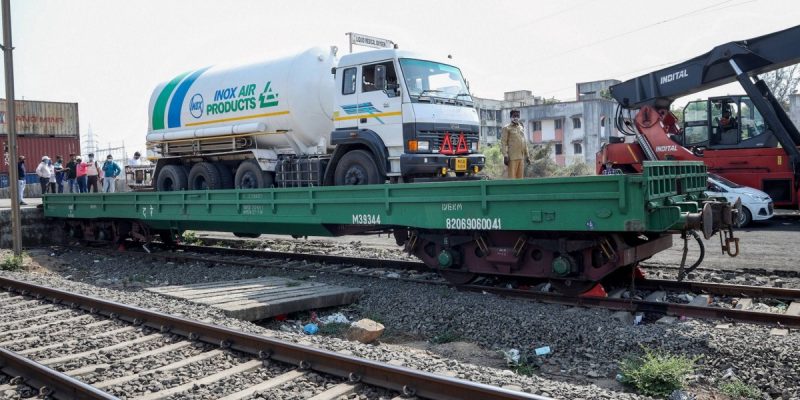
East-Coast Freight Corridor Gets Top Priority for Approval: DFCCIL MD

 :
| Updated On: 21-Jun-2025 @ 1:14 pm
:
| Updated On: 21-Jun-2025 @ 1:14 pmSHARE
As the final stretch of the Western Dedicated Freight Corridor (WDFC) — between Vaitarna and Jawaharlal Nehru Port Terminal (JNPT) — nears completion, the Dedicated Freight Corridor Corporation of India Limited (DFCCIL) is now focusing on securing approval for new freight corridors and expanding Gati Shakti Multimodal terminals.
Speaking at the Global Heavy Haul Seminar 2025 held at Bharat Mandapam, DFCCIL Managing Director Praveen Kumar stated that among the three newly proposed corridors, the East-Coast Corridor, running from Kharagpur (West Bengal) to Vijayawada (Andhra Pradesh), will be prioritized for approval. The Detailed Project Report (DPR) for this corridor, along with the East-West Corridor (Kharagpur to Palghar) and North-South Corridor (Itarsi to Vijayawada), has already been submitted to the Ministry of Railways and is awaiting sanction. Together, these three projects are estimated to require an investment of ₹4.5 lakh crore.
Kumar highlighted that the final portion of the 1,506 km long WDFC, stretching from Dadri in Uttar Pradesh to JNPT near Mumbai, is expected to be commissioned by December 2025. Meanwhile, the 1,856 km Eastern Dedicated Freight Corridor, connecting Ludhiana (Punjab) to Dakuni (West Bengal), is already fully operational. The implementation of these corridors has significantly improved train speeds — from the usual 20–25 km/h on traditional Indian Railways networks to about 45–50 km/h on DFCCIL’s corridors. Though the infrastructure supports speeds up to 100 km/h, rolling stock (wagons) currently limit the maximum speed.
The Western Corridor predominantly handles container traffic, while the Eastern Corridor is mostly used for transporting coal. Due to the adoption of advanced technology, transit times on these routes have been reduced by almost 50%, leading to greater reliability. As a result, thermal power plants have cut back on coal inventory, relying more confidently on timely freight delivery through DFCCIL.
The shift of freight operations to dedicated corridors has also improved passenger train services. Kumar noted improved punctuality in adjacent zones such as North Central Railway (NCR), North Western Railway (NWR), Northern Railway, Eastern Railway, and East Central Railway (ECR) — a direct consequence of reduced freight load on their networks.
Currently, around 400 freight trains operate daily on the DFCCIL network, with the potential to scale up to 480 trains once the JNPT connection is completed. Although DFCCIL's network comprises only 4% of the Indian Railways’ track length, it carries 13% of the total Gross Tonne-Kilometres (GTKM).
Additionally, DFCCIL is undertaking multiple business development initiatives. Kumar shared plans to expand Gati Shakti Multi-Modal terminals, with four terminals already commissioned and six more targeted for completion in the current financial year. One notable initiative is the Truck on Train (TOT) scheme, under which milk trucks are being transported from Palanpur (Gujarat) to Rewari (Haryana) — previously done via highways. This improves last-mile delivery efficiency.
Kumar concluded by noting the importance of the seminar, where global experts shared innovations in the heavy haul sector, which DFCCIL intends to integrate into its operations to enhance the efficiency and reliability of the Indian freight network.